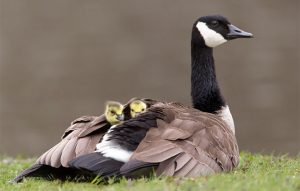Here’s how kids can take wildlife photographs like a Nat Geo pro
Open your child’s eyes to nature and boost their wildlife photography skills with these top tips!
There may not be a lioness taking down an antelope or a humpback whale breaching in your garden, but kids can still capture stunning wildlife photography just beyond your kitchen window. And it’s a great way to instil an appreciation for the natural world in children.
“Photography opens a child’s eyes,” says photographer Suzi Eszterhas, who’s captured images of cheetahs, lion cubs, and sloths. “Noticing the beauty in the world through their photographs every single day opens that door to a secret world that we don’t notice when we tune things out.”

Before handing over your smartphone or camera, Eszterhas suggests establishing some ground rules. First, keep kids from getting too close to their wild subjects. (Any critter can be unpredictable when spooked, even the cute ones). Discourage them from creeping up on baby birds or fawns, since that might keep mum away. And advise children that if an animal stops what it’s doing because they’re around, their presence is probably alarming it.
We asked Nat Geo experts like Eszterhas for wildlife photography tips to share with budding shutterbugs. Here’s what they said…
Get inspired.
National Geographic photographers like Eszterhas have been all over the world with their cameras – but before that, they started off in their own gardens and local parks. Encourage your kids to look for wildlife wherever they go. You’d be surprised what stories they can find on a walk home from school, in a nearby flowerbed or by carefully observing a local tree.
Help them seek out a wide range of beautiful photographs too – of animals around the world, and ones a bit closer to home.
One great resource is right here on the kids’ pages of National Geographic Kids website. Plus, the pages of our monthly magazines are packed with extraordinary images sure to inspire your young readers. Spark their imagination with a subscription packed full of mind-blowing photography that will have them itching to capture images of their own.
Wait for the right moment.
“Patience is probably the most important part of my job,” Eszterhas says. “We can’t make animals or insects ‘do things,’ so you need the patience to let things happen around you and wait for it.”
Encourage your kids to sit quietly and see what emerges. The longer they wait, the better chance that animals might come to them. “Spending an hour waiting for a bird or a squirrel to do something cool can result in a good photo,” Eszterhas says. “You won’t win ’em all, but if you spend enough time waiting, cool things will happen.”
Learn to observe.
“I’m like a spy in the jungle,” says National Geographic Explorer Sandesh Kadur, who’s photographed everything from elephants to king cobras. “I don’t want the animals to know I’m there. But by being an observer you uncover layer upon layer of intricate detail in the lives of different species.”

Have children keep a journal to write down all the animal activity they notice so they can figure out the best time to get certain shots. “Kids can go out every day for an hour before breakfast and see similar things happening, or begin to see how different things happen at different times,” Kadur says. “When they start writing these things down, the patterns will begin to emerge.”
Sneak a little closer each day.
Eszterhas says becoming a non-threatening part of the scenery means some animals might simply get used to photographers being around. “I was trying to photograph a den of shy black-backed jackals,” she says. “I spent 17 days getting them used to my presence by starting in my jeep miles away and moving closer every day.”
If you have a critter that regularly visits your garden or local park, have kids take pictures from afar one day, then scooch a little closer at the same time the next day. Before long, the creature might not mind being their model. (Just remember, kids need to be mindful of how their presence affects the animal—if it darts away or stops what it’s doing, your child is too close.)
Get the light right.
“You always want to find the animal when they’re most active, but you also want to find the animal with good light,” Eszterhas says. “Try waking up early in the morning before the sunrise to get the golden light of the first rays of sun on an animal. The same applies with sunset.”
Think like an animal.
Eszterhas suggests a little sleuthing might score the right place to set up, especially if you know where your subject will be. “Try lying down on your belly to get a bird feeding on the ground,” she says.

Kids can also think about creative angles. For instance, if they know that a certain bird lands on the same branch every day, they can pre-plant themselves to set up from different directions. Shooting up into a tree while on their backs? Sitting on a branch nearby? That kind of creative thinking could yield one-of-a-kind pics.
Watch for the action shots.
Kids might not spot two rhinos clashing their horns, but a keen eye will yield great animal kingdom adversity. “I was once photographing bees for a few days and realised that insects called assassin beetles were waiting in the cactus blooms for these bees to come pollinate,” Eszterhas says. “The beetles would jump out and grab the bees.”
To find similar wildlife excitement, kids can check out birdbaths to find a couple of garden birds scrapping. A spiderweb is also a great spot to look for action, such as when unfortunate prey gets stuck in the arachnids’ danger zones.
Fix your focus.
Smartphones automatically focus, but insects can flit away while you’re trying to get close enough for the shot. Kadur suggests preparing in advance. Instead of initially holding the camera close to a subject to focus on it, kids should try pre-focusing before shooting small targets.

“Point your camera or phone at the palm of your hand,” Kadur says. “It will focus on the wrinkles of your skin in your palm.” Then, for many smartphones, hold your finger on the screen after focusing until the letters AF/AE (for auto-focus and -exposure) pop up, then release your finger. Now the focus is locked, so you catch your micro-subjects without having to refocus—and catch all the little details.
Camo can be key.
Blend in with your surroundings, and animals might not even know you’re there. “If you know that birds come to a feeder at the same time each day, you can camouflage yourself in a tree or bushes,” Eszterhas says. Hide among the branches or crouch between two shrubs. Birds and squirrels won’t be frightened off if they can’t see you.
Turn wildlife photography into a science.
Kadur says that wildlife photography can lead to greater accomplishments. “Over time kids will be creating a database of sorts, logging all they’re seeing and shooting,” he says.
Kadur suggests that—with a parent’s supervision—kids visit digital databases like the Cornell Lab of Ornithology’s Merlin to identify birds and add their own observations. Insects, spiders, and ants can be uploaded to the site iNaturalist, which helps research scientists collect data about plants and animals from your community and tie it to larger numbers worldwide.
“Kids will then be adding to science,” he says. “Maybe their image will set a new record for a certain area where folks didn’t know a little critter existed. By documenting and contributing, they can increase the scientific understanding of a species.”














LEAVE A COMMENT
THANK YOU
Your comment will be checked and approved shortly.
WELL DONE,
YOUR COMMENT
HAS BEEN ADDED!
COMMENTS
CUSTOMIZE YOUR AVATAR